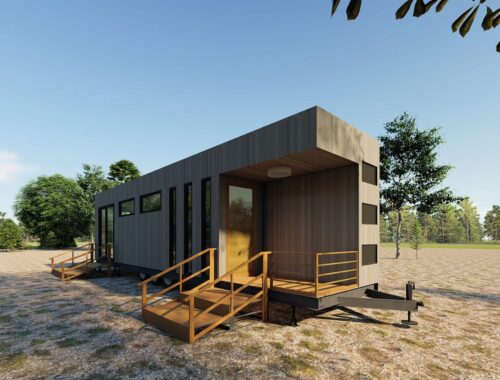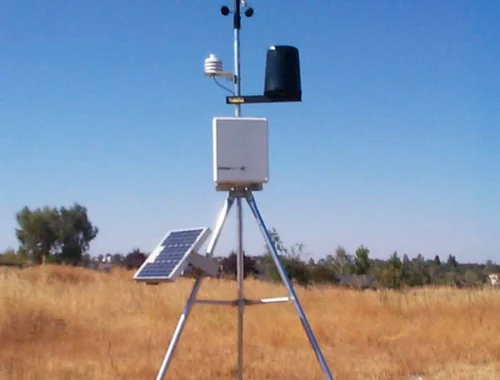Farewell, Old Hayward Field
After a series of postponements, a tentative construction date is scheduled for July. Not everyone is happy about it.
Last week new details emerged about the renovation of Hayward Field, the University of Oregon’s storied track and field stadium, which is slated to host the 2021 IAAF World Championships. While initial plans left much of the original stadium intact—including its beloved east grandstand—that no longer seems to be the case. Renderings in the Oregonian show images of a sleek, ultramodern stadium equipped with a transparent wraparound roof and, bafflingly, an adjacent nine-story tower. The project is scheduled to begin construction in July after multiple postponements and reportedly will cost more than $200 million. Phil Knight, the Oregon alumnus and Nike cofounder, is a principal benefactor.
“My business life was born on Hayward Field, so this is a deeply personal project for me,” Knight said in a University of Oregon press release. He isn’t the only person who feels that way.
As Austin Meeks, a sports columnist for Eugene’s Register-Guard, has extensively reported, some longtime Hayward faithful are wary that, with its futuristic splendor, the new design lacks the intimacy of its predecessor. To comply with IAAF regulations, Hayward will need to boost seating capacity from 10,000 to 30,000 when it hosts the World Championships. Although the permanent capacity will be kept at 12,900, that number is itself a sizable increase, prompting fears of empty seats and a dampening of the venue’s famous aura, known as the “Hayward magic.”
“When the magic is there, it’s incredible,” Jay Bowerman, son of late Oregon track coach and Nike cofounder Bill Bowerman, said in a recent Register-Guard article. “You leave a facility half-empty, and no matter how excited the remaining fans are, it just doesn’t happen anymore.”
There’s also the question of whether that magic can be revived without the east grandstand. Built in 1925, those wooden bleachers have long held a prominent place in Hayward—and by extension Nike—lore. Situated along the back straightaway of the track, they have been a second home to many of the country’s most passionate track fans for generations. When I attended a press trip to the 2015 Pre Classic track meet (disclosure: the trip was paid for by Nike), Vin Lananna, the University of Oregon’s associate athletic director and a key figure in bringing the World Championships to Eugene, spoke about the east grandstand with reverence.
“Bill Bowerman didn’t touch these stands because he loved these stands,” Lananna said. “Once we do our renovations for 2021, these stands will remain wood and they will look exactly the same.”
At least that was the line in 2015, when Nike design legend Tinker Hatfield was still in charge of the blueprints for the new stadium. At some point during the past three years, those plans were quietly scrapped and the reins were handed over to the architecture firm SRG Partnership. Although the reason for the change remains unclear, the University of Oregon has asserted that the new design is consistent with the school’s legacy of innovation. In a deft PR move last week, the university released a short video introducing the reimagined Hayward Field that included vintage footage of Bowerman talking about a redesign of the old west grandstand, which was torn down and rebuilt in the early seventies. The message was clear: even Hayward’s patron saint wasn’t afraid to make changes.
The primary impetus for the new stadium is the 2021 IAAF World Championships, itself a beleaguered issue. For one thing, there’s an ongoing FBI investigation into how Eugene was selected to host. The city was given the nod in the absence of any formal bidding process. Lamine Diack, who was president of the IAAF when Eugene was awarded the championships, was arrested a few months later on charges that he’d accepted bribes to cover up Russian doping violations.
Some locals have qualms about whether hosting a major international event like the World Championships is really in Eugene’s interest. (The preceding three took place in London, Beijing, and Moscow.) “Eugene is probably the smallest city, by a good measure, that has ever hosted the World Championships,” said Bob Penny, a carpenter who ran track at South Eugene High School, attended architecture school at the University of Oregon in the 1970s, and has been a vocal critic of the Hayward Field construction plans.
“Eugene really didn’t go through a bid process where there was an ask to the town like, ‘Do you want to do this?’” Penny added. “The IAAF and the ‘University of Nike’ like to do things their own way.”
Then again, Eugene has hosted multiple track and field Olympic Trials and NCAA Championships in the past. The city is also home to TrackTown USA, an events company, helmed by Lananna, that lobbied hard for Hayward Field to host the World Championships. (Ironically, TrackTown USA uses the soon-to-be-razed east grandstand in its logo.)
I asked Scott Krause, a Eugene native who launched a petition to save the Hayward landmark through Change.org, how he felt about the argument that the new design was merely part of the natural evolution of a venue that has evolved over time. “When people talk about how you can’t keep things forever, well, they’ve done a pretty good job of keeping the Sistine Chapel, the Eiffel Tower, and the Empire State Building,” Krause said, adding that he was in favor of combining historical elements of Hayward with new features rather than starting from scratch.
Not everyone who has a history with Hayward Field is so sentimental. In an e-mail, Lauren Fleshman, a collegiate all-American who ran professionally for the Eugene-based Oregon Track Club until 2012, suggested that there might also be a kind of Hayward hegemony.
“Hayward Field is a special place, but let’s not get too precious about a stadium,” Fleshman said. “We need to ask ourselves, which history exactly are we clinging so tightly to? If we’re being honest, it’s primarily a history of white distance-runner dudes, a single story of track and field anchored by [Steve] Prefontaine and Bowerman—characters who can do no wrong after death, who only get larger with time and marketing dollars. Let’s make it a place where new stories can be written. Where new heroes can be seen against a new backdrop.”
Whether the looming specter of Prefontaine or Bowerman is a boon or a burden for old Hayward Field is open to debate. Unsurprisingly, Krause, when asked about the pervasiveness of the Pre legend, said that he feels it has an inspirational rather than oppressive effect on young runners. Nevertheless, even Krause admits that future legends would probably have an easier time establishing themselves in a venue that didn’t bear the nickname “the house that Pre built.”
Those trying to salvage parts of that house hold out hope. On Monday, Eugene’s city council voted to consider an application to designate the east grandstand a city landmark. “The east grandstand was designed by Ellis Lawrence, who is basically Oregon’s most famous architect,” Penny, who attended the vote, told me. “When it comes to all the characteristics you evaluate to determine whether a building is historic—significance of events, significance of people, significance of architecture—the east grandstand is eminently qualified.” Still, landmark status might not be enough to save it. There are bureaucratic loopholes that the university can use to remove the structure. There has even been discussion about moving it to a new location, outside the stadium.
Regardless of how things turn out, those who want to pay their respects to the old Hayward magic will need to move fast. This year’s Pre Classic takes place May 25–26. Construction is scheduled to begin a few weeks later.
You May Also Like

ユニットハウスのメリットとデメリットを徹底解説
March 22, 2025
AI in Fashion: Revolutionizing Design, Shopping, and Sustainability for a Smarter Future
March 1, 2025